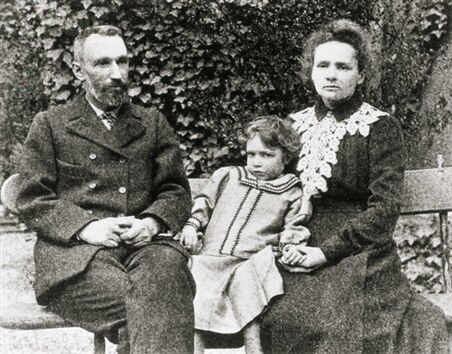Although some of the intellectual giants of science and engineering walked their own path from the start, many others were influenced by significant role models and supporters in their immediate families. Many of these innovators in turn offered support and inspiration to their own children.
This week, we'd like to hear from members of the community about their own family connections. Did a relative contribute to your passion for engineering when you were young? Are you passing your knowledge down to your own children? Share your stories in the comments section below...
To give you some inspiration, here are three particularly notable engineering 'dynasties', plus an inspiring example from two of our top members.
The Stevens family, pioneers in mechanical engineering
John Stevens and his family rank among the most distinguished engineering dynasties in U.S. history, their achievements having played a key role in molding modern mechanical engineering. A colonel in the Revolutionary War, Stevens designed the first American-built steam locomotive in 1825 and was a pioneer in developing the steamboat. His son Robert went on to invent the modern T-rail, used around the world on railroad tracks today and along with his brother, Edwin, built the first commercial railroad in the U.S. Edwin was also heavily involved in the construction of several vessels for the U.S. Navy. Another of John’s sons, John Cox, built and raced the yacht America, which was the first winner of the America’s Cup trophy in 1951. Innovation in the Stevens family has carried on to the next generation, as John’s grandson, Edwin Augustus Stevens, designed a double-ended reversible propeller-driven ferryboat based on an idea by his grandfather.
The Curie family, a Nobel Prize winning dynasty
The Curies have the distinction of being the family that has been most decorated by the Nobel Prize Foundation, predominantly in the fields of chemistry and physics - paving the way for many core disciplines in engineering today. Marie Curie, a Polish physicist, chemist and engineer, was a pioneer in research on radioactivity. For her research, she was the first woman to win a Nobel Prize, which she shared with her husband, Pierre in 1903. She received her second prize from the foundation in 1911. Her daughter, Irene, was also the recipient of a Nobel Prize for her discovery of artificial radioactivity in 1935. The legacy continued down the Curie family line, as both of Irene’s children are esteemed scientists.
The Cain family, representing nine decades of electrical engineering
Eugene Cain received his electrical engineering degree from the University of Delaware in 1932, during the Great Depression. Thirty years later, his son, Donald graduated from the same university and ultimately passed the legacy onto his son, who earned a master’s degree in 1997. While all three Cain men studied electrical engineering, their career paths are clear examples of how diverse job opportunities are in the field. John worked as a stevedore while playing for a semi-pro baseball team sponsored by his company, which saved him from the ranks of those unemployed during the Great Depression. Donald worked in the power industry, where he made a career out of designing lines and hooking up customers. The youngest Cain, Bradley, moved in yet another direction from his father and grandfather and works for several startups designing Internet data center products.
Dale and Chrystal Winhold - element14's father-daughter maker team
The element14 Community boasts its own cross-generational maker team in the form of Dale and Chrystal Winhold of Alberta USA. Longtime member dwinhold has collaborated with his daughter chrystalw on a number of exciting projects for the community, including contributing to a number of our design challenges. In November 2015 our Top Members nominated the duo as our 'Members of the Month' in recognition of their hard work and creativity.
Do you have a family story to rival these featured engineering dynasties? Tell us about your relative connections in the comments section below.

